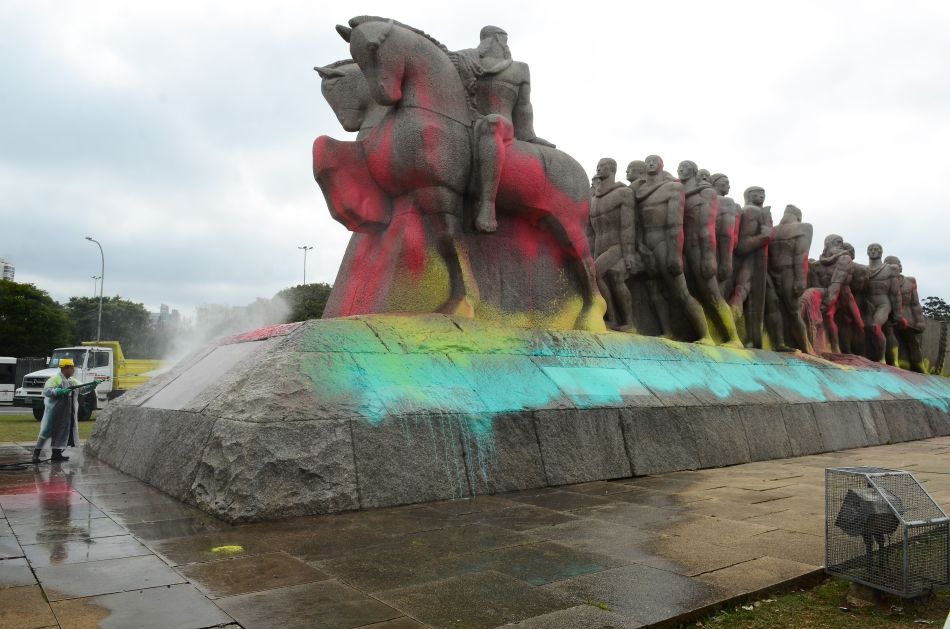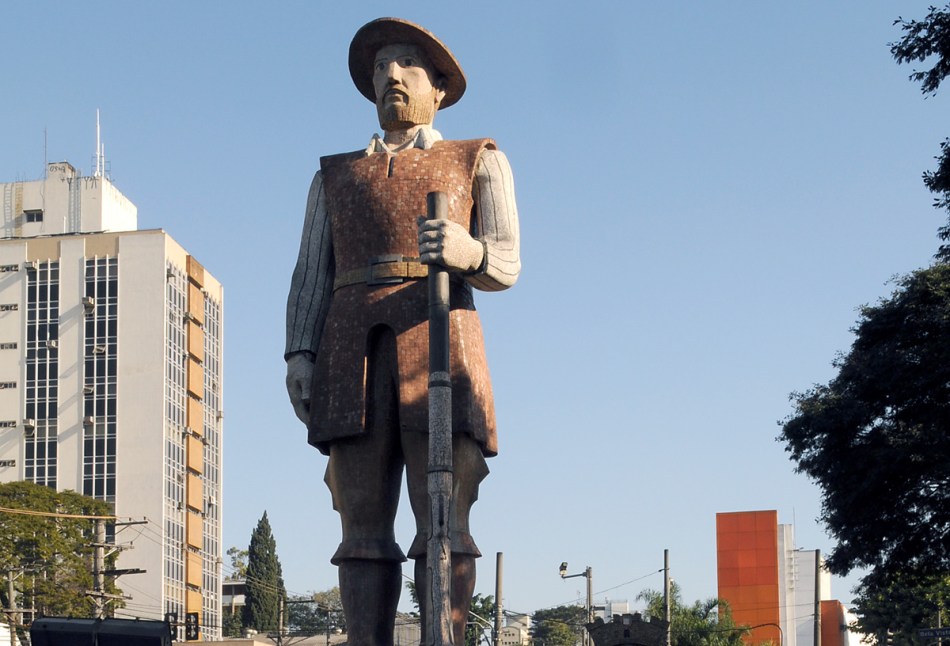by Douglas McRae
The removal of monuments in New Orleans has captured national attention, with reports of tempers flaring and tensions rising among protestors and counter-protestors in one of the country’s most historically and culturally significant cities. Last Friday, the City of New Orleans removed the last of four monuments, three of which depicted Confederate leaders and another that commemorated an 1874 uprising by a white paramilitary, the Crescent City White League, against the multiracial Reconstruction-era state government of Louisiana. Hundreds of similar monuments are scattered across the Deep South. A Mississippi state representative, in a show of incredibly poor judgment, even called for the lynching of those who authorized the removals in New Orleans, pledging on social media to do “all in my power to prevent this from happening in my state.”
Media reports inevitably attempt to portray two sides to this saga, at times grasping to demonstrate that one person’s hate is another person’s heritage. Searching for a middle ground, however, threatens to muddle certain basic truths about the Confederacy, namely the rebel government’s declared commitment to slavery and its expansion, as well as the entrenching of the white supremacist ideology that justified the subjugation of Afro-descendants. While furor over the monuments may seem like a recent concern, activists and officials that advocate for removal recognize that the struggle over the city’s public spaces stretches much further back that often recognized. The 2015 massacre at Emanuel AME Church in Charleston and the emboldening of the far right in the wake of the recent presidential election have only heightened the urgency of efforts to confront symbols of the Confederacy across the South.
As a native of Jackson, Mississippi (three hours north of New Orleans) and a historically-minded citizen of the United States, my view on the matter is unequivocal: Confederate monuments must come down as part of the long, contentious and necessary process of dismantling structures of white supremacy in the United States. My own scholarly interests, however, also shape my perspective: I am a historian of Latin America and Brazil, currently residing in the sprawling city of São Paulo. Watching the removal process unfold from afar has led me to reflect on the meanings of historical monuments in urban spaces in both countries, as well as critically evaluate the claims of those opposing the outright removal of Confederate monuments. A broader reflection on the meaning of monuments and commemoration unravels the arguments that monuments like the ones removed in New Orleans have any place in our society.

Scholars have frequently compared the United States and Brazil—in addition to vast geographical and natural resource endowments, both nations have historical legacies of slavery and violence towards Afro-descendants as well as indigenous peoples. The U.S. South and Brazil were two of the most important players in the wider circum-Atlantic expansion of slaveholding economies in the early nineteenth century, an era that some historians have started to call the era of “second slavery”—a doubling-down on enslaved African laborer that allowed for soaring agricultural exports including cotton, coffee, and sugar for the global industrial economy.[1] Among many divergences, however, Brazil notably lacks a major domestic conflict comparable to the U.S. Civil War—in fact, a basic contrast to draw between the U.S. and Brazil is the latter’s gradual trajectory of emancipation, versus the violent armed conflict in the former that finally broke the back of Southern slaveholders in 1865. The fact that a wave of disaffected ex-Confederates migrated to Brazil after the Civil War speaks to the perceived similarities in the minds of planters seeking to restart their lives in another America.[2]
In Brazil, on the other hand, a series of gradual abolition measures over decades prolonged slavery until 1888. Regional differences on the question of abolition certainly existed in Brazil, with greater abolitionist fervor in the economically declining Northeast and lingering pro-slavery sympathies in the burgeoning coffee-producing Southeast. This latter region encompassed much of São Paulo and had absorbed a good portion of Brazil’s nineteenth century enslaved population through an overland domestic slave trade. Post-abolition romanticizing of the slaveholding past certainly occurred into Brazil’s republican period, often in service to propping up the myth of Brazilian racial democracy, yet nothing resembling the pro-Confederate “Lost Cause” ideology—a nostalgic cult to militarized honor and chivalry, often with open ties to white supremacy—emerged in Brazil. Indeed, white supremacy manifested in other nefarious ways, namely through eugenicist ideologies of racial improvement through “whitening,” which sought to address Brazil’s comparative economic underdevelopment.
Despite these divergent trajectories between Brazil and the U.S., to me there exists a point of comparison to the monuments under scrutiny throughout the South, particularly in the city of São Paulo: the bandeirantes.[3] While today São Paulo is the most cosmopolitan city in Brazil’s most economically dynamic region, it started as a humble frontier outpost in 1554. Over the next century and a half, it became a launching point for the bandeiras—expeditions which set forth into the continental interior in search of mineral riches and native peoples to enslave, named for the flags they carried aloft as they advanced. In addition to capturing and enslaving Brazil’s native peoples, bandeirantes (as the leaders of such expeditions were known, also translatable as “pathfinders”) waged war against autonomous communities of ex-slaves, known as quilombos in Brazil. The most celebrated quilombo of the seventeenth century was Palmares; it was eventually brought down by a detachment of Paulista bandeirantes in 1695, after nearly a century of existence at the fringe of colonial sugar plantations its inhabitants once worked.
The legacy of the bandeiras is thus one of colonialism, violence and slavery. Yet the bandeirante underwent a significant image makeover as Brazil transitioned from Portuguese colony to independent nation in the nineteenth century, and as São Paulo (the historic base of the bandeiras) transformed from a backwater provincial capital into the industrial center of South America at the turn of twentieth century. As the city expanded and its industrial economy flourished, city builders plowed much of its historical architecture and natural landscape under concrete, metal and pavement in the name of material progress and cultural modernity. As the material past melted away, the city’s intellectuals sought inspiration in mythical adventurers of earlier centuries.
The monuments to the bandeirantes in São Paulo city are products of a self-conscious crafting of Paulista identity, whitewashing historical figures twice: once figuratively by muting their violent impact on those they enslaved, and second literally by depicting them as European in appearance.
Conflict with the Brazilian federal government in the first half of the twentieth century culminated in a failed 1932 Paulista uprising to reclaim regional autonomy from the government of Getúlio Vargas, who had taken power in a coup two years earlier. The resulting conflict aided in solidifying an enduring Paulista identity, founded on modernity and progress, that had its origins in the path-finding ways of Brazil’s first explorers, the bandeirantes.[4] Part of this new valorization involved the construction of commemorations that cast bandeirantes less as the mixed-race slave raiders that they were (who dressed like and even spoke a variant of the native Tupi, used by those they sought to enslave), and more as white, entrepreneurial European explorers, always looking towards the distant horizon, with hardly a weapon in sight.

One such representation of the bandeirantes has recently served as a flashpoint for controversy. A well-known icon of São Paulo’s south zone, the Monument to the Bandeiras looms over the northernmost entrance of Ibirapuera Park. This imposing stone sculpture, composed of multiple muscular figures dragging a small boat in their wake, appears to be marching northwest up Avenida Brazil, the thoroughfare that bisects São Paulo’s the Jardins neighborhoods. Brazilian modernists conceived of the sculpture in the 1920s as a way to revalorize Brazil’s colonial history, yet the project only acquired momentum (and funding) after the aforementioned 1932 regional revolt. State governor Armando de Sales praised the statue’s proposed design in 1936, claiming that the gradually diminishing height of the monument’s figures represented “hierarchy, inseparable from discipline and one of the most beautiful principals of social organization.”[5]
Since its final inauguration in 1953, the completed Monument to the Bandeiras has persisted as an interpretation of such themes. Its multiple meanings have recently faced challenge. In 2016, in tandem with protests for indigenous rights and recognition, the monument was doused with paint under cover of night. The blood-red splatter marks left on the monument served as reminders of the murderous acts of the historical bandeirantes as well as contemporary echoes of the continued threats of violence faced by minority groups (indigenous and Afro-Brazilian alike) in the present. In a city where graffiti and street art often overlap with political meanings, the purposeful defacing of the monument makes a statement about the historical narratives represented in public spaces. Indeed, graffiti has also been a first line of contesting the meanings of Confederate monuments in places like Charleston, South Carolina. The paint has since been scrubbed off, but it is striking to view images and subsequently reinterpret the monuments.

Truth be told, the name and image of the bandeirantes are pervasive throughout São Paulo’s urban landscape, past and present.[6] Yet it has been the monuments that have come under the most scrutiny and, occasionally, revision. A statue in the Santo Amaro region of São Paulo of the bandeirante Borba Gato has been covered in graffiti and was convicted in a mock “people’s trial” that highlighted the crimes of the bandeirantes. In addition to performative acts of protests, public institutions like the Museu Paulista, one of the region’s largest historical collections, have begun to reevaluate its collection’s bandeirante iconography. A modest outdoor exhibit in front of the museum breaks down the various problematic portrayals in works created primarily between 1903 and 1935, emphasizing that the history of society is made through choices: what to emphasize and what to hide. In this case, the violence and war that accompanied the advance of Portuguese colonial society is absent from monumental depictions. While the reflection falls short of outright removal, in this instance it is also the work of activists that has led to a deeper engagement with these century-old pieces.
The monuments to the bandeirantes in São Paulo city are products of a self-conscious crafting of Paulista identity, whitewashing historical figures twice: once figuratively by muting their violent impact on those they enslaved, and second literally by depicting them as European in appearance. These choices of depiction emerged from a time when Paulista elites, emboldened by their economic successes, chose to promote their whiteness as evidence of their recourse to modernity, juxtaposing themselves not just with black Paulistas who they systematically excluded, but also with the rest of Brazil that trailed behind São Paulo’s economic lead.

In general, thus, we may view these and other monuments as simultaneously reflecting two historical times: the moment or era they commemorate, and the context in which they were created. The second meaning is often less evident when compared to the first, but both interact with the present moment. Returning to the monuments commemorating Lee, Beauregard, and Davis: we have depictions that emphasize leaders and warriors, divorced completely from any notion of the cause for which ordered men into battle. The context in which they were built is also relevant. Most Confederate monuments across the South came up in the era after Reconstruction, a period that produced a new political alignment between the defeated planter class and rising Redeemer industrialists. It was not quite a restoration of the antebellum elite, but the subsequent “New South” alliance sought to maintain tight control over Southern blacks and poor whites.[7] Postwar white elites oversaw this wave of monument construction, which buttressing the “Lost Cause” mythology and tacitly condoning the wave of violence carried out against Southern blacks in this period.
Thus, while the commemoration of the Confederacy is highly suspect, the tainted origin of the monuments’ commissioning has equal, if often obscured, relevance. Actions taken in regards to monuments, up to and including removing them, do not constitute an erasure of history; rather, they represent a direct engagement with historical narratives, the multiple meanings behind these monuments and the ideologies that justified their construction and continuance in public spaces. Defenders of the monuments who cast them as neutral, apolitical, eminently historical or otherwise unquestionable elements of urban spaces are the ones who are erasing historical memory.
 Douglas McRae is a PhD candidate in History at Georgetown University, where he also received an MA in Latin American Studies. He is currently researching the environmental and social history of urban water and sanitation services in São Paulo, Brazil.
Douglas McRae is a PhD candidate in History at Georgetown University, where he also received an MA in Latin American Studies. He is currently researching the environmental and social history of urban water and sanitation services in São Paulo, Brazil.
* * *
Our collected volume of essays, Demand the Impossible: Essays in History As Activism, is now available on Amazon! Based on research first featured on The Activist History Review, the twelve essays in this volume examine the role of history in shaping ongoing debates over monuments, racism, clean energy, health care, poverty, and the Democratic Party. Together they show the ways that the issues of today are historical expressions of power that continue to shape the present. Also, be sure to review our book on Goodreads and join our Goodreads group to receive notifications about upcoming promotions and book discussions for Demand the Impossible!
* * *
We here at The Activist History Review are always working to expand and develop our mission, vision, and goals for the future. These efforts sometimes necessitate a budget slightly larger than our own pockets. If you have enjoyed reading the content we host here on the site, please consider donating to our cause.
Notes
[1] See the collected articles in Review: A Journal of the Fernand Braudel Center, Vol. 31 No. 2 (2008) and Rafael Marquese and Ricardo Salles, eds., Escravidão e capitalismo: Cuba, Brasil, e os Estados Unidos. (Rio de Janeiro: Civilização Brasileira, 2016). Also, see Sven Beckertt: Empire of Cotton: A Global History (New York: Knopf, 2014) for an account of the relationship between the British-centered global textile industry and the violent expansion of slavery in nineteenth century North America.
[2] The transnational significance of Brazilian confederados—as this small cultural group, confined mostly to two small towns in western São Paulo state, is known—is beyond the scope of this piece, though it does speak to wider sense of shared hemispheric identity and belonging experienced by Southern slaveholders in the mid-late nineteenth century. See: Cyrus B. and James M. Dawsey, eds. The Confederados: Old South Immigrants in Brazil (Tuscaloosa, AL: University of Alabama Press, 1988); Laura Jarnagin. A Confluence of Transatlantic Networks: Elites, Capitalism, and Confederate Migration to Brazil. Tuscaloosa, AL: University of Alabama Press, 2008. Matthew Pratt Guterl, American Mediterranean: Southern Slaveholders in the Age of Emancipation. (Cambridge, MA: Harvard University Press, 2008).
[3] Historian Micol Seigel has argued that comparative studies of the U.S. and Brazil flatten the transnational dimension and mutual constitution of cultural and social discourses. See Uneven Encounters: Making Race and Nation in the U.S. and Brazil (Durham, NC: Duke University Press, 2009). There is certainly a transnational dimension to the image of the bandeirantes, as Brazilian and North American scholars alike have compared with pioneers or frontiersmen. While the transnational aspect is important, in this instance I am specifically interested in the comparative role that monuments play in urban spaces versus the transnational encounters that may have contributed to those monuments ultimate forms.
[4] Barbara Weinstein, The Color of Modernity: São Paulo and the Making of Race and Nation in Brazil (Durham, NC: Duke University Press, 2015), especially Chapter 2.
[5] Quoted in Roberto Pompeu de Toledo. O capital de vertigem: uma história de São Paulo, 1900-1954 (São Paulo: Companhia de Letras, 2015), p. 362 (my translation).
[6] Most infamously, Operation Bandeirante was the codename used by Brazil’s military government in the state of São Paulo after 1969 to hunt and detain leftist dissidents and guerillas.
[7] C. Vann Woodward, Origins of the New South, 1877-1913 (Baton Rouge: Louisiana State University Press, 1971[1951]), pp. 21-22.



Pingback: Editors’ Pick: Our Favorites from a Year of #ActivistHistory – The Activist History Review